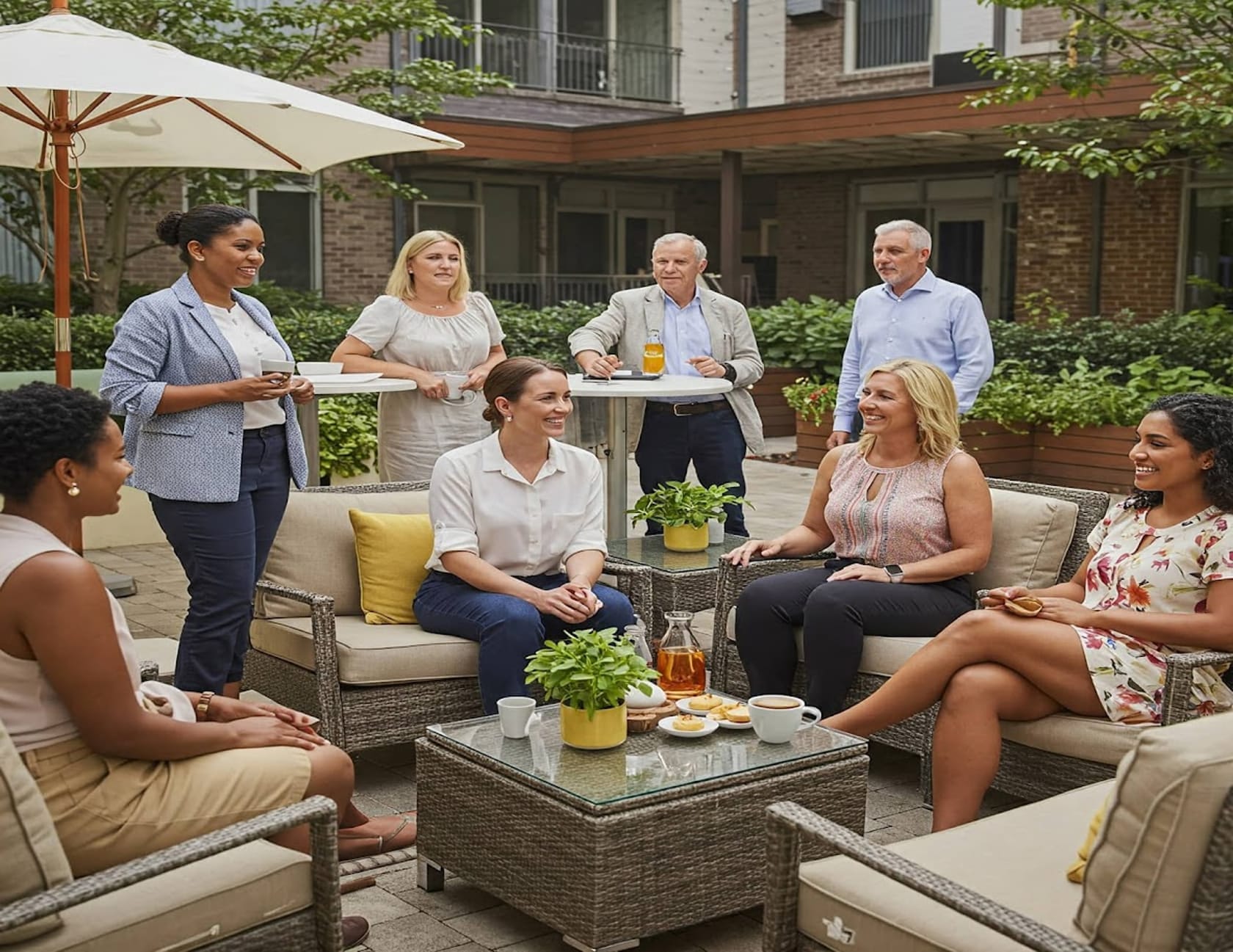%201%20(1).png)
Sustainable multifamily building retrofits are more important, and more costly, than ever. Whether it’s scalable new tech, nature-based solutions, or the turn towards energy-conserving construction, multifamily communities are all in.
Today’s investors and residents consider environmental impacts of multifamily housing at a more comprehensive, educated level. And though net-zero ratings are still out of reach for multifamily buildings, recouping green building costs today can be done in less time than typical industry averages of years past.
Data shows multifamily residents feel eco-conscious communities are worth an inflated price tag.
“Gen Z and younger millennials are some of the biggest supporters of sustainability, according to apartment market data. About 80% of apartment residents believe that living in green multifamily communities is good for their health.

Also, 81% of consumers today think companies should be pursuing environmentalism. Younger generations are even willing to pay more for sustainable products and services. In fact, 61% of renters say they would pay more each month in rent for an eco-friendly apartment,” ApartmentData.com reports.
Everything from building design to eco-friendly processes are noticed by potential residents.
“Younger generations, which make the largest pool of residents, care about their carbon footprint and they are willing to pay more for apartments managed by teams focused on environmental responsibility—and multifamily owners and operators must focus on making their communities appealing to this group,” delivers Multi-Housing News.
Enticing new residents with eco-conscious amenities is just one way leasing consultants promote their buildings. Retaining current residents is much easier when buildings offer energy-saving options. For the progressive resident, energy conservation is just one part of an earth-conscious lifestyle.

Sustainable Building Lifecycles
BusinessWire defines successful green construction as “the practice of using sustainable building materials and construction processes to create energy-efficient buildings with minimal environmental impact, throughout a building’s life-cycle from siting to design, construction, operation, maintenance, renovation, and deconstruction.”
The eco-conscious reader may ask, “Why so few sustainable multifamily buildings in an age where green building should be the norm, not the exception?”
While many investors would like to build sustainable communities each time they break ground, it’s not as easy as covering costs and hoping for the best. Multi-Housing News reports, “In 2021, the USGBC awarded LEED certifications to 196 multifamily communities across the country, 19 of which were awarded basic LEED certification, while 65 communities received LEED Silver certification, 82 received LEED Gold certification and 30 communities were awarded LEED Platinum.”
Whether speed bumps like supply chain or lack of affordability prevent more buildings from going green, multifamily builders say they are adding more sustainable options to their projects. "Most ...multifamily builders/ remodelers (74%) agree that building green costs more than building a traditional home. Among respondents who do green building projects, and believe that green building involves a cost premium, the highest percentage believe that the cost premium is between 5% and 10%," reports NAHB.
Asset managers and owners understand sustainability, environmental impacts, and long-view cost optimization are the three main motivators behind the residential green building market.
“These trends not only increase property value, but promote a much better lifestyle for multifamily residents to live comfortably. Even with these trends taking a front seat in design, there is still a continuous strive to develop innovative ideas and methods to enhance living conditions,” reports Favergray Contractors.

Incentivizing Green Retrofits
It’s not easy to keep up with state laws and regulations, whether green or not. While many national companies want to cast a wider eco-conscious net, retrofitting their communities is at the top of the budget. Everyone from universities to start-up incubators are making sustainability a top priority in developing for the future.
Consider one-stop shop Database of State Incentives for Renewables and Efficiency, where finding policies and incentives is as easy as clicking on one of the fifty states.
“Additionally, Fannie Mae offers Green Rewards, the Green Building Certification Pricing Break and Green Preservation Plus as a part of Green Financing. The Green Financing program supports multifamily properties, including those seeking to make energy-saving and water-saving property improvements,” reveals Multifamily Loans.
ICAST (International Center for Appropriate and Sustainable Technology) illustrates, “Investing in sustainable building and community features will better the environment, offer many benefits to your residents and team members, and appeal to a wide range of prospect demographics.”
Tried & Tested Renewable Design
“Environmentalists have advocated for sustainable architectural design for many years now, and though the multifamily industry has been relatively slow to adapt, it’s time for every business within our vast, complex sector to examine their environmental footprint, take action to reduce its impact, and weave sustainability into their brand story.
If you’re keen to adopt federally recognized green practices, your business can earn tax credits and other benefits, while promoting tangible environmental change,” ICAST explains to multifamily management.

Simply put, inefficient building designs and insufficient planning are preventable, if leadership works towards changes like those suggested on a printable checklist from BioFriendlyPlanet.com.
Deferred Maintenance Costs More in the Long Run
Increasing maintenance efficiencies while reducing material and energy use are simple enough with these 5 areas of improvement:
- Water Conservation: low-flow fixtures, insulated or tankless water heaters, stormwater retention tanks for non-potable hydration
- Energy Conservation: solar panels, battery storage, smart electric panels, automated smart home tech like occupancy sensors/ thermostats/ solar shades, caulking and insulating existing windows and doors, LED bulbs, energy-efficient appliances, and regular HVAC tune-ups, upgrade to a living roof
- Indoor Air Quality: low or no VOC paint, formaldehyde-free building chemicals, limit mold growth with proper filtration systems, high-capacity energy recovery ventilation (ERV) units, use non-toxic cleaning agents
- Recycle, Reuse, Regenerate: set up recycling for everything from bottles and cans to electronics and battery pick-up, offer to collect and donate household items for reuse, grow and nurture natural landscaping that doesn’t use pesticides or excessive water, provide gardening opportunities on or off-site
- Transit Opportunities: EV charging stations, bicycle amenities, ride share community feed, build communities near public transit stations


.avif)


